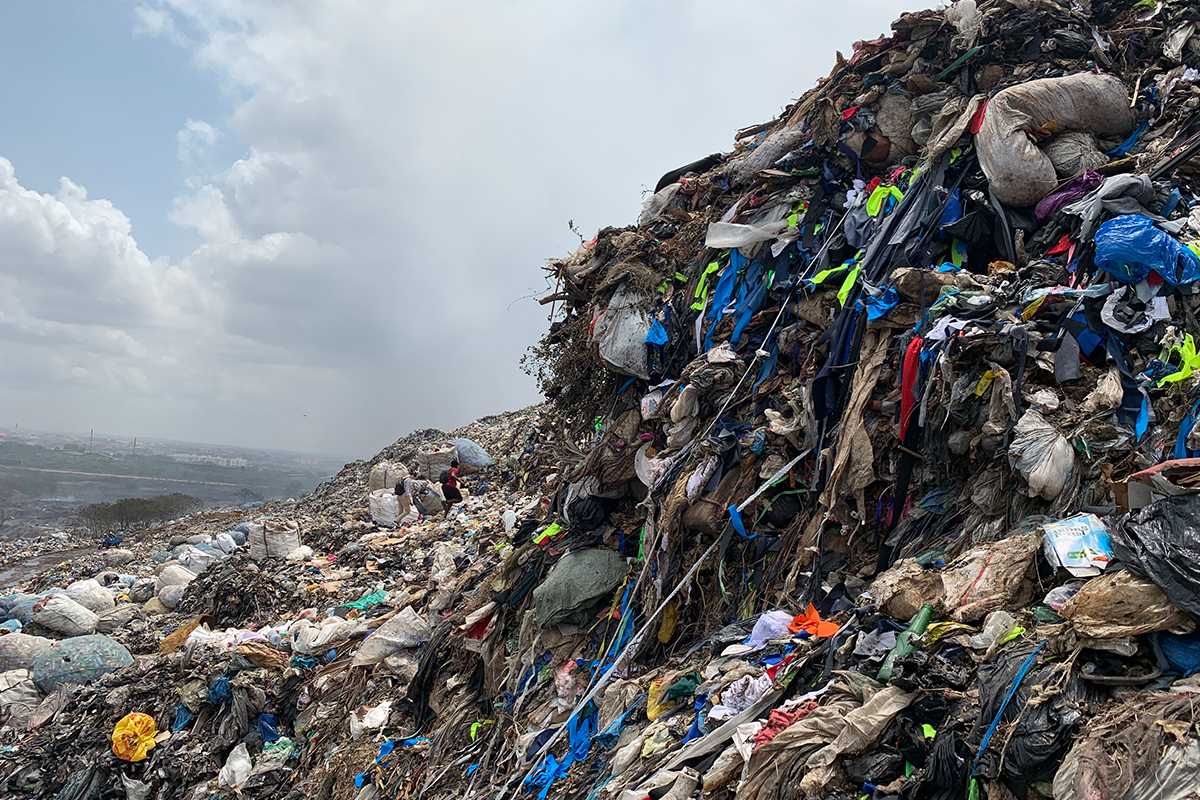4 places where our clothes end up when they are discarded
While browsing through aisles of neatly stacked clothes in a mall, you would never have wondered what will happen to your purchased clothes when you discard them. If you ask anyone around about how they discard clothes, the reply would be that either they donate it to some charity or they hand it down to their maid or someone they know. One would even feel good knowing that their clothes would help someone in need.
But do they really end up being useful?
The answer seems to be a big No.
We are consuming textiles at a rapid pace. Our clothing utilization, which means the number of times a garment is worn, has decreased by 36% in the last few years. This means we are discarding clothes at an alarming rate and this has become a huge environmental and waste management problem.
Huge piles of clothes discarded get exported from the developed world to poor countries. And along with it the problem of waste management is also exported.
Let’s take a look at 4 of the many places in the world where a good chunk of the world's clothes end up.
Kantamanto Market, Ghana

Image: The landfill site in Kpone is oversaturated with textile waste, Credit: The OR Foundation
The Kantamanto Market in Accra, Ghana, is the largest second-hand clothing market in West Africa. It sees 15 million garments coming through it every week, in a country of 30 million people. Over a three-year study, it was found that 40% of the clothing that is unbaled in Kantamanto leaves the market as waste. They end up at landfills and in bodies of water, polluting entire ecosystems. Most of the clothes coming in are fast fashion items which are of cheap quality. As per second-hand clothing traders, this cheap quality clothing difficult to sell and is hurting their business.
Panipat, India
Panipat is known as the world's "cast-off capital". Every day hundreds of tonnes of clothes from across the UK and the US, and other countries, arrive in Panipat. Clothing are sorted based on the colours and then ripped into smaller fabrics. These are then converted into yarn which are used to make cheap blankets. These blankets are often used in Disaster reliefs and exported to poor African countries. However, in the past few years, so much discarded clothing has arrived that Panipat’s landfills are falling short.
Atacama Desert, Chile
Chile has long been a hub of second-hand and unsold clothing, made in China or Bangladesh and passing through Europe, Asia or the United States before arriving in Chile, where it is resold around Latin America. Some 59,000 tonnes of clothing arrive each year at the Iquique port in the Alto Hospicio free zone in northern Chile. Clothing merchants from the capital Santiago, 1,800km (1,100 miles) to the south, buy some, while much is smuggled out to other Latin American countries. But at least 39,000 tonnes that cannot be sold end up in rubbish dumps in the desert.
Gikomba Market, Kenya
In 2019 Kenya imported 185,000 tonnes of second-hand clothes, with about 30 to 40% clothes having no market value. This means around 55,500 – 74,000 tonnes was textile waste. Every day about 150 to 200 tonnes of textile waste – between 60 to 75 truckloads – ends up dumped, burnt, or sent to overflowing dump sites. Traders complain that most of the imported clothes are unusable and have no market value. The unsold clothes are piled up along river banks and flowing downstream.
The problem of discarded clothes is going out of hand. All possible solutions ranging from – consuming less, utilizing our clothes more, responsible disposal, circular business models by brands, and recycling programs are the need of the hour to put a halt to this vicious problem. And for that, all stakeholders – brands, consumers, investors, and policy-makers have to act together.
Subscribe to our newsletter
Promotions, new products and sales. Directly to your inbox.


Comments
Jagdish said:
Thanks for sharing this blog , This blog is creative and informative . Keep sharing the blog like this.
https://www.noblesportswear.com/
Jagdish said:
Thanks for sharing this blog , This blog is creative and informative . Keep sharing the blog like this.
https://www.noblesportswear.com/
Aayushi said:
I want these clothes.
Garmen Bandung said:
Your website is very inspiring with high-quality content. We are sure that you will find additional useful information on our website. Come on, visit us at Garmen Bandung and we can collaborate with each other.
Warm Regard.
Ayesha's Collection said:
Ayesha’s Collection,
Thank you very much for providing us with a very nice information I think this information is very important so thank you for this information.
Baby world said:
Baby world,Your blog post shines a much-needed spotlight on the lifecycle of discarded clothing and the broader impact of our consumption habits. You’ve effectively highlighted the gap between good intentions and the reality of what happens to our clothes after we discard them. By examining the environmental and waste management issues associated with textile disposal, you offer a critical perspective on a pressing global problem.
Priti said:
Interesting read I might use this information to make reels.As I am into budget fashion…and its disheartening to read about what happens to our discarded clothes and how it’s impacting our mother nature.
BD Wear said:
I really look for such scanners. We had access to valuable information from your blog that we might use.
https://www.bdwear.com/
Dr. Suman Mundkur said:
Very nice Blog! Informative! I would like to use some of the pictures for my teaching students. A large part of my research was in Panipat. Sharing the link to my thesis here.
Mundkur, S. D. & Dedhia, E. M. (Ph.D. Guide) (2016). Sourcing and Reuse of Post-Consumer Clothing Waste for Technical Textile Products (Thesis). Accessed from http://shodhganga.inflibnet.ac.in:8080/jspui/handle/10603/245350
http://hdl.handle.net/10603/245350
BD Wear said:
This article is creative and informative. I actually look such website for me. I’m so glad for all the information.
https://www.bdwear.com/import-t-shirt-from-bangladesh-tee-manufacturer/
BD Wear said:
This article is creative and informative. I actually look such website for me. I’m so glad for all the information.
https://www.bdwear.com/import-t-shirt-from-bangladesh-tee-manufacturer/
Regina McInnes said:
I would like to use some of the pictures in your article about textile waste in a short article I am proposing to write for the American “Handwoven Magazine”.
Would you give permission to use one or two of your photos containing waste disposal sites around the world.
Regards
Regina McInnes